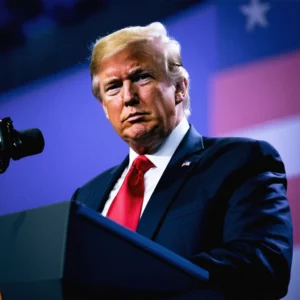
Introduction
The modern era presents a host of challenges in the realm of military communication and leadership accountability. Recent discussions concerning statements made by figures such as Pete Hegseth have brought to light critical issues regarding the intersection of politics, communication, and national security. The debate intensifies when sensitive operational details are shared via unsecured, civilian communication channels, inevitably raising questions about the integrity and accountability of those in leadership positions.
Understanding Modern Military Communication
Modern military operations rely on secure, reliable methods of communication to ensure the safety of service members and the success of critical missions. As technological advancements continue to reshape the communication landscape, it becomes imperative for military leaders to adopt practices that prioritize data security and confidentiality.
The Rise of Civilian Technology
Many traditional military communication channels have been complemented, and sometimes replaced, by civilian technologies that offer convenience and speed. However, this blending of civilian and military uses can create significant vulnerabilities:
- Data breaches due to unencrypted communication platforms.
- The inadvertent spread of sensitive information to unintended recipients.
- The question of whether such practices align with best military operational protocols.
Instances where defense officials or related personnel have used popular civilian apps for transmitting sensitive information have fueled public debate. Critics argue that such practices put national security at risk and undermine the trust placed by service members in their leadership.
Accountability and Leadership
Leadership accountability is a cornerstone of military culture. When incidents arise that compromise security, questions immediately follow regarding the decision-making process and the extent of accountability for those involved. In the business of national defense, the integrity of every individual, especially those in leadership positions, is crucial:
- Transparency in communication is fundamental to maintaining trust.
- Clear protocols should be established before engaging with any digital platform.
- Leadership must be prepared to answer for any lapses that may occur.
Critics of the current scenario point to the apparent disconnect between political rhetoric and actual practices. The reference to Pete Hegseth, a figure who is often involved in discussions about military ethics, underscores the broader issue of whether leaders can genuinely uphold the values they publicly advocate for when their personal or departmental practices diverge from those ideals.
Implications for National Security and Policy
The risks associated with using non-secure communication platforms extend far beyond the occasional error or oversight. If a defense secretary, or any high-ranking official, were to inadvertently or recklessly use a civilian app to share classified war plans, the consequences could be severe.
Leadership in the defense sector involves not only the careful management of military resources but also a deep understanding of the evolving landscape of information security. Considerations include:
- Maintaining operational secrecy against digital espionage and cyber threats.
- Ensuring that all channels used for communication meet rigorous security standards.
- Providing ongoing training for personnel on the responsible use of digital tools.
Recent events have sparked debates about whether current protocols are sufficient or if they need comprehensive review and restructuring. A defense secretary involved in a lapse using an unsecured app sends a powerful message: the importance of establishing and adhering to strict communication protocols is paramount. Such actions can lead to drastic policy changes aimed at bolstering national security and reinstating public trust in military institutions.
The Role of Media and Public Perception
Public opinion and media narratives play an influential role in shaping how such incidents are framed and subsequently remedied. Media coverage that highlights lapses in secure communication not only tarnishes individual reputations but may also cast an enduring shadow over broader institutional practices.
Within this context, the media’s role is twofold:
- Scrutinizing the decisions made by defense officials to ensure accountability.
- Encouraging a public discourse that demands higher standards for the protection of sensitive information.
Critics argue that figures such as Pete Hegseth, who have vocalized support for military values, must face intense scrutiny when similar values are not reflected in actual operational practices. The disconnect between politically charged rhetoric and the reality of compromised security protocols has fueled an ongoing debate. The public and policymakers alike are forced to confront the implications of a leadership that may fail to fully embody the principles it advocates, thereby questioning its ability to protect national interests effectively.
Future Directions and Strategic Recommendations
Moving forward, there are several strategic recommendations for addressing these complex issues. The overarching goal is to reconcile modern communication practices with the stringent security imperatives that underpin military operations. Key steps include:
- Enhanced Training: Implementing more comprehensive training programs for all levels of military and defense leadership on digital security protocols.
- Policy Overhaul: Reviewing and updating policies related to the use of digital and civilian communication tools in sensitive contexts.
- Technological Investment: Investing in high-security communication platforms that meet the rigorous demands of modern warfare, ensuring seamless integration with existing military networks.
- Regular Auditing: Establishing strict monitoring and audit trails to mitigate any potential leaks or misuse of information.
By adopting these measures, military organizations seek to balance the innovative benefits of modern technology with the timeless need for security and accountability. Industry leaders and policymakers must work in tandem to adopt best practices that protect sensitive information while promoting efficient and transparent decision-making.
Conclusion
In conclusion, the controversies surrounding the use of insecure communication channels and the perceived disconnect between political rhetoric and operational practice serve as important reminders for the modern defense establishment. As debates intensify over the actions and attitudes of key figures in this sphere, there is an urgent need for transformative policy measures aimed at reinforcing security protocols and ensuring that leadership remains both accountable and aligned with the ideals they champion.
Ultimately, the credibility of any defense establishment rests on the collective commitment to secure communications, ethical leadership, and unwavering accountability. By addressing these challenges head-on, institutions can better serve the interests of national security, uphold the trust of service members, and navigate the complexities of modern military communication with greater confidence and integrity.
Looking Ahead
The current landscape calls for a deeper introspection into how emerging digital tools are integrated within national security frameworks. The imperative is clear: there can be no compromise on the standards of secrecy and security that protect the lives of military personnel and the strategic interests of the nation. Future leaders must recognize that in the realm of defense communications, diligence, foresight, and strict adherence to established protocols are not merely best practices—they are the very foundation upon which national sovereignty rests.
The evolving debate tests the resilience of established norms and the capacity for rapid adaptation in an era marked by technological revolution and geopolitical uncertainty. It is the responsibility of policymakers, military officials, and analytics experts to collaboratively redefine the standards for secure and responsible communication in a world where every technological advancement brings with it both new opportunities and fresh challenges. The path forward requires a balance between embracing the benefits of innovative digital tools and instituting robust safeguards that ensure no critical information falls into the wrong hands.




